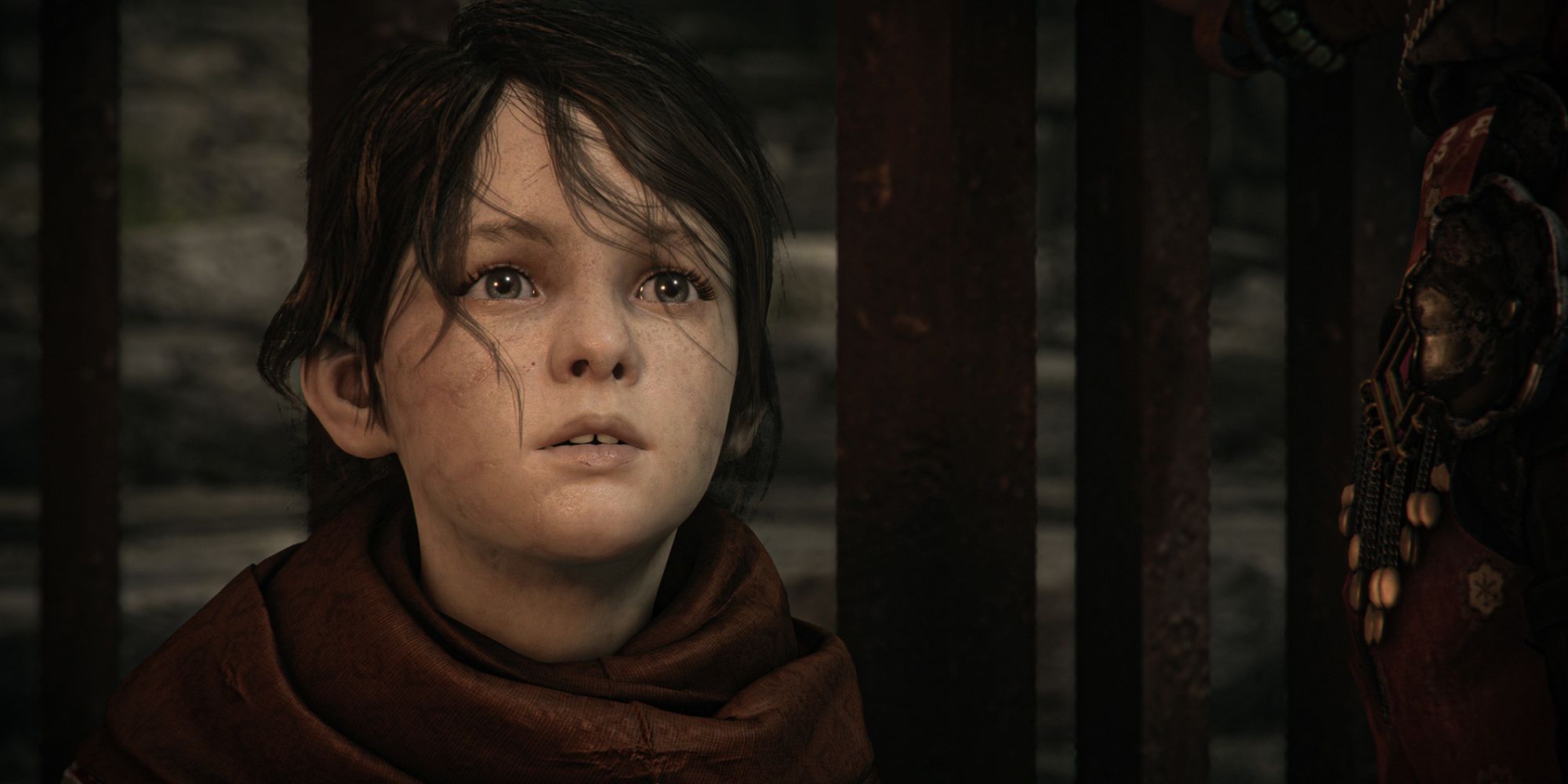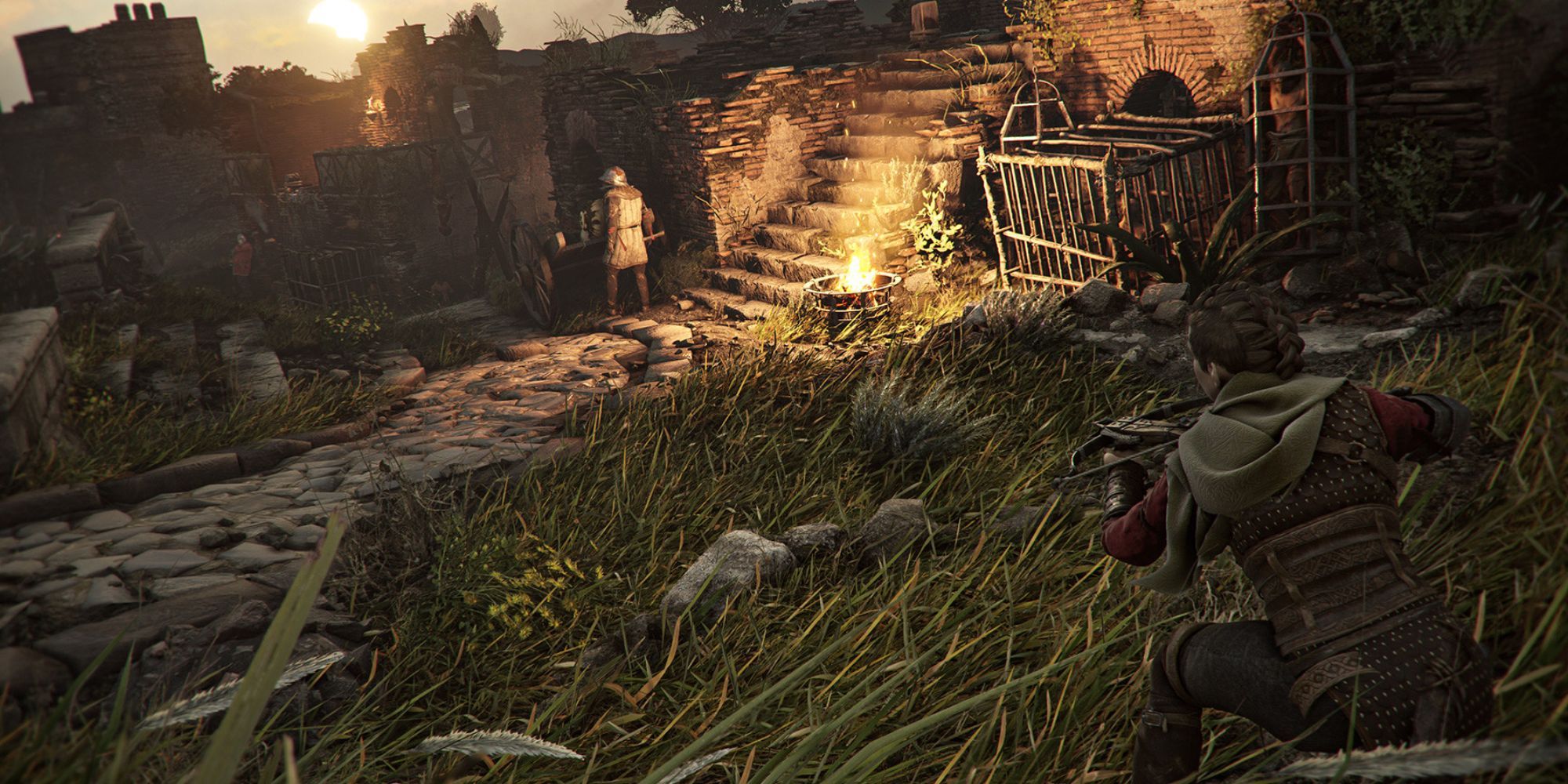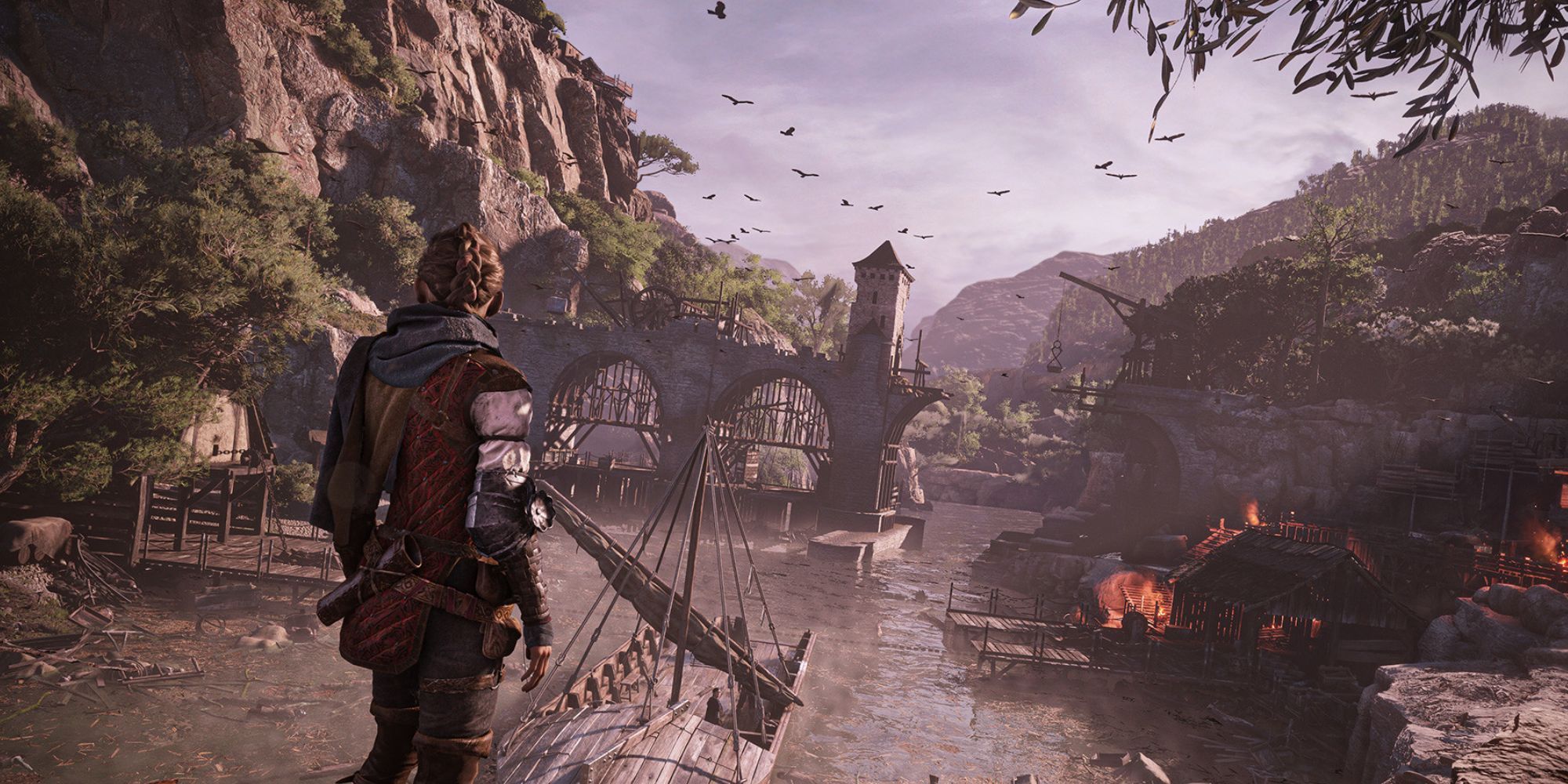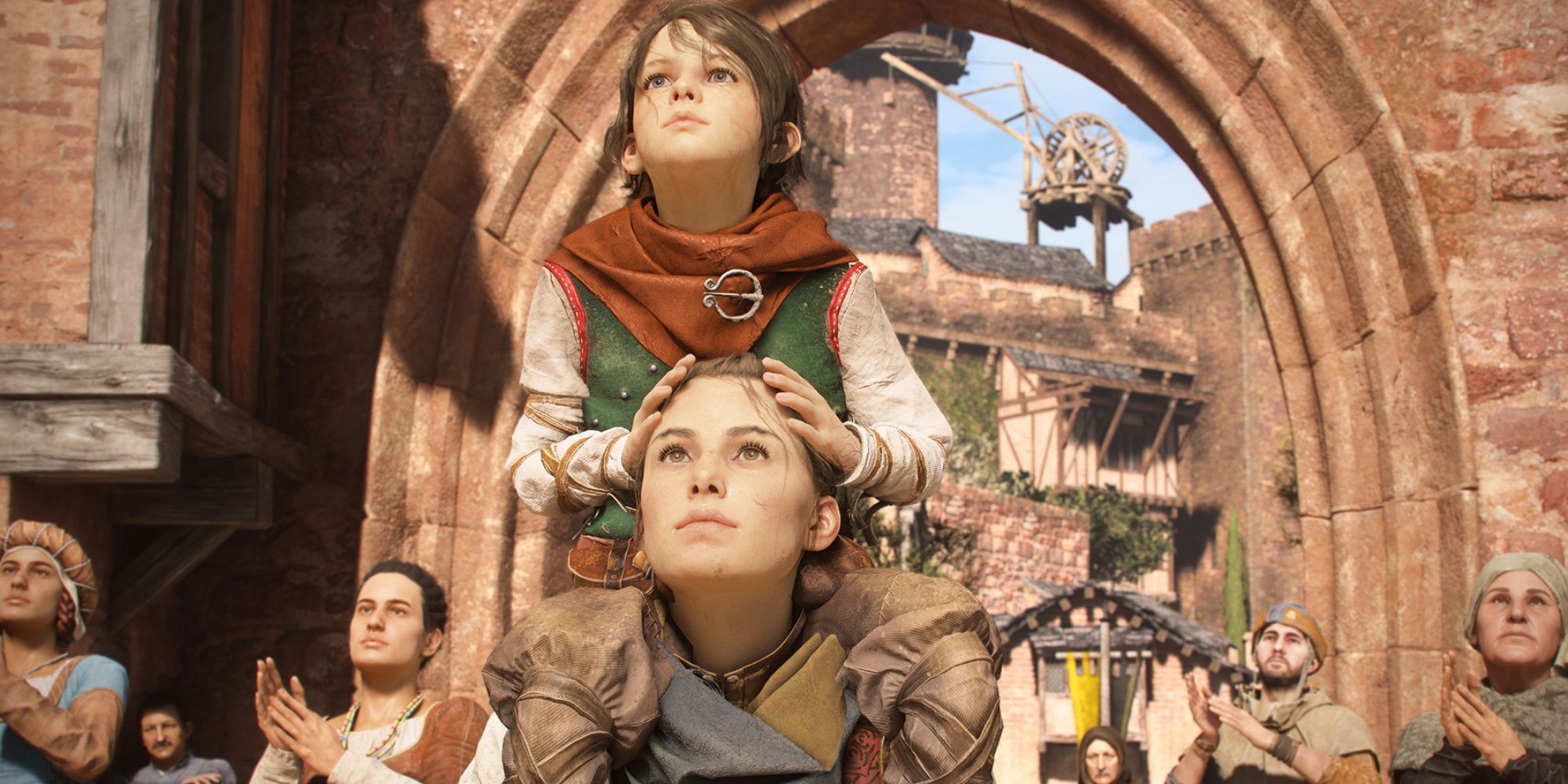|
Our Score |
7/10 |
|
The Good |
Great narrative, an engaging world and improves upon the original |
|
The Bad |
Clunky environments and a lack of gameplay variety |
|
Release Date |
October 18 |
|
Developed By |
Asobo Studio |
|
Available On |
PlayStation 5, Xbox Series X/S, Nintendo Switch, PC |
|
Reviewed On |
PC |
Disclaimer: Copy was provided by the developer for review purposes.
Welcome back to the sunny south of France, home to scintillating views, charming architecture, and, of course, a deadly rat plague that threatens humanity’s existence. Asobo has largely leaned into iterating on what people loved about the first game with A Plague Tale: Requiem, and while being a bit more daring and innovative at several points would've gone a long way, they've done a fine job in solidly delivering a sequel.
The game takes place six months after the events of Innocence. As for where we find our key protagonist duo, Amicia is still as dedicated as ever to protecting her younger sibling, Hugo, who is still afflicted by the Makula. However, his symptoms have at least lessened since his confrontation with Vitalis. When we join them again, the quartet of Amicia, Hugo, their mother Beatrice, and her apprentice Lucas are on the search for a new home. After a playful opening sequence that’s actually a clever bit of foreshadowing, the player is immediately met with the stunning vistas of the French countryside. It’s clear from the off that Asobo wanted the player to feel the shift in the landscape. While Innocence can be dark and dreary at times, the scenes of Requiem are most often blanketed in warm sunlight. Predictably, good times do not last and soon the de Rune siblings are once again on the run from those who would do them harm.
A Plague Tale: Requiem is a lot like its predecessor. The series’ two core gameplay pillars of hiding from guards and solving fire-related puzzles to stave off the rat hordes remain well-intact. Requiem gives you some shiny new tools to vary your approaches, but the gameplay loop has not been innovated upon. Enter a new area, gain access to a new tool, and then use it to solve the area’s puzzles. As the level progresses, you’ll have to combine several of the tools you’ve acquired so far to advance. This is the essential loop of A Plague Tale, it’s a linear action-stealth game with basic puzzling mechanics.
This isn’t meant in a derogatory manner, either. What Plague Tales does, it does well. Every time I go through a door, a new “arena” is presented to me and my goal becomes to go from one end to the other. The puzzles are relatively simple and I never found myself frustrated moving through the game. Each chapter of Requiem can almost be broken up into which alchemical compound you’ll be using for the majority of its puzzles, so it’s rarely hard to figure out the right tool for the job.
Despite the new tools, Plague Tale: Requiem is far from an immersive sim. There are very clear pre-determined paths through levels that the game expects you to take. Sure, new additions like potable fire open up slight variations in your pathing, but they don’t change gameplay significantly enough to suggest Plague Tale has become a full-blown “multiple ways to approach situations” experience. You have a couple of new ways to kill guards along the way but it doesn’t change much, the essence of the game remains as it did in Innocence.
One thing that I suspect will strike players is the capacity for violence that Amicia now holds. While Innocence forces the player to sneak around a lot, Requiem offers far more ways to eliminate threats. Between her trusty sling, and the newly-added knife, crossbows, and pots of fire, Amicia has all the tools she needs to cut a bloody swathe through the not-so-honourable personal guard of the Count of Provence. I’m not overplaying this either, Amicia was nigh unwilling to kill in Innocence. But I’ve now seen her stand her ground as she consecutively murders a dozen soldiers.
The “hardening” of both Hugo and Amicia (mostly the latter) remains a big theme of the series that continues in Requiem. Protecting Hugo in these dark times has Amicia beyond her years, and stolen a lot of her empathy to boot. The narrative of A Plague Tale, while consistently solid, really shines when it hones in on this theme. These are two kids who have been thrust into a perilous situation beyond their control. While the non-stop brutality of the world can’t take away their lives, despite its best efforts, their resolve and morality are being steadily chipped away at.
The series has always been dark, but now Amicia has become as sombre as the world around her. It feels as if literally every character is trying to double-cross you in Requiem. When you begin to believe in human decency again, the carpet is swiftly ripped out from underneath you. I sympathise with Amicia’s decaying humanity, how can she be expected to stay chipper when the world around her is so bleak?
Surprisingly, her counterpart actually does manage to stay upbeat. I’ve never really been likened to Hugo before, he fit the description of a generic, whiny child in the first game. But in Requiem, I was surprised when I actually started to care about the fate of the “chosen one.” The younger de Rune actually shows a surprising amount of optimism and resolve in Requiem, almost as if he’s become a full-fledged character rather than just an extension of Amicia.
The pair aren’t hunted by the Inquisition this time around, but instead by the army of the Count of Provence. In fact, the number of places these yellow-clad foot soldiers turned up was almost comical. A little more enemy variety would have been welcome as you face these same soldiers across almost the entire game. If it isn’t the guards, it’s the rats. It’s to be expected, but I wish Asobo had taken the time to sprinkle in something else to test me.
I appreciate the introduction of some newer characters, and the implications they have on gameplay when they’re in your “party.” There’s a particular character I’m a big fan of because they turn gameplay hilariously easy with their ally “power.” Despite me hammering home how Requiem is “more of the same,” there have been efforts on Asobo’s part to add some gameplay variety into the mix. There are these “sprint” sections that aren’t any challenge but they do add a certain kind of cinematic flair. There’s also a turret section and a lot of walking slowly around towns and villages, though I wasn’t a huge fan of those particular bits by the end of the game.
The environments continue to be a bit clunky, every path is gated with cumbersome invisible walls. Piles of debris I feel I really ought to be able to walk over continue to be completely unconquerable. The branching paths that lead to collectibles have a Fable-like quality to them, feeling obviously carved out. Every high place requires a cart but luckily there’s always a cart nearby — seriously, why are there so many carts that are a perfect height for boosting me up to ledges? Ultimately, whatever you think about it, the game is linear by design.
And so what? I’m not a huge fan of how bulky the environment feels at times, and the walking sections can become tiresome, but the truth is, Requiem had me engaged from start to finish. Sure, the game has its flaws, and it’s not a very malleable experience, but that doesn’t stop it from being a good time all the same. At its heart, A Plague Tale is a narrative-driven atmospheric experience. Everything else is just icing on the cake.
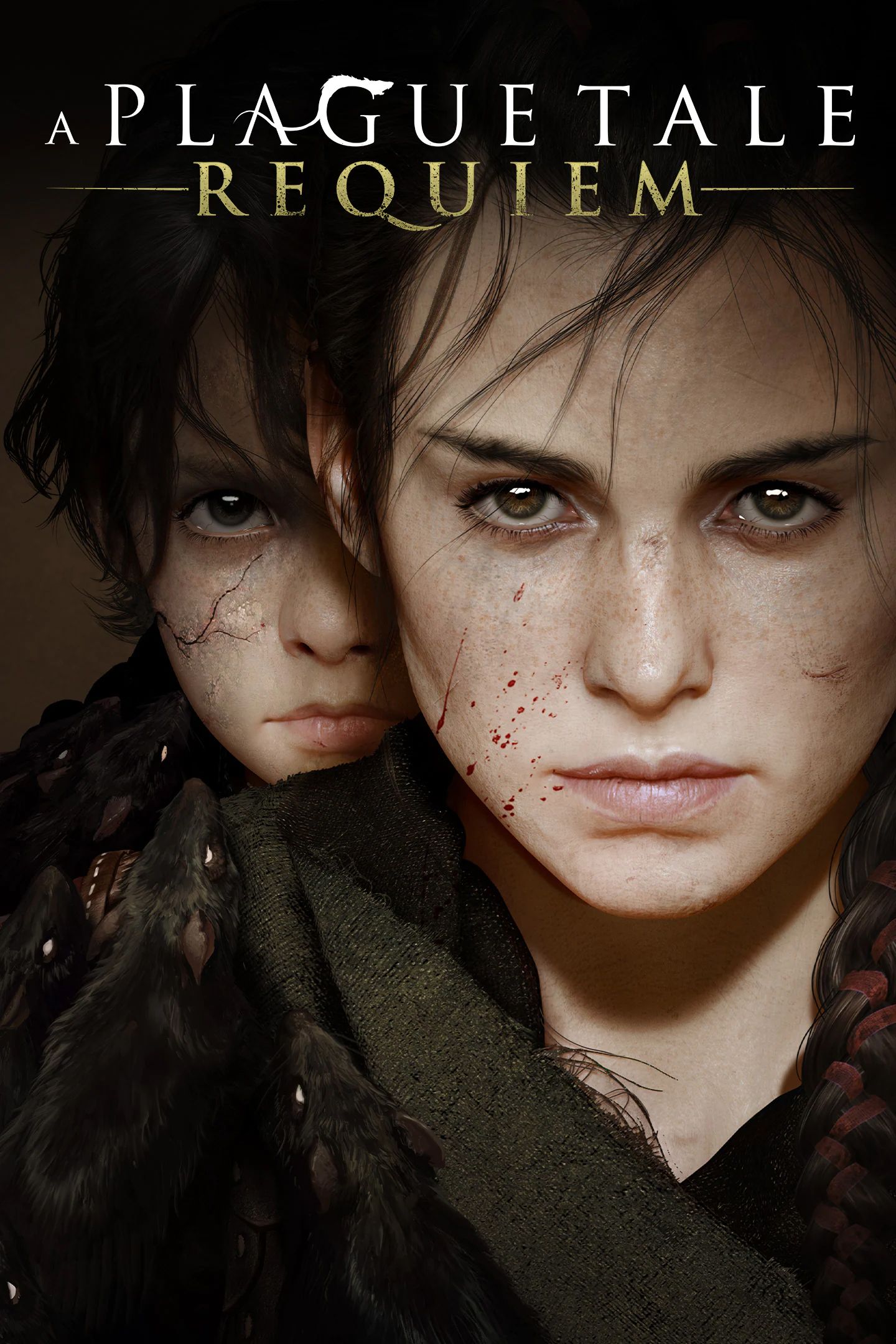
A Plague Tale: Requiem
- Platform(s)
- PC , Switch , PS5 , Xbox Series X , Xbox Series S
- Released
- October 18, 2022
- Developer(s)
- Asobo Studio
- Publisher(s)
- Focus Entertainment
- Genre(s)
- Action-Adventure , Stealth
- ESRB
- M

